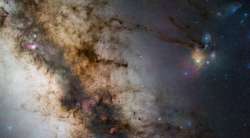NASA to study microbes aboard the International Space Station
NASA astronauts in collaboration with the non-profit Alfred P. Sloan Foundation, will now explore the microbial environment on the International Space Station, said NASA. The International Space Station (ISS) is a unique built environment having

NASA astronauts in collaboration with the non-profit Alfred P. Sloan Foundation, will now explore the microbial environment on the International Space Station, said NASA.
The International Space Station (ISS) is a unique built environment having effects of microgravity, space radiation and elevated carbon dioxide levels. It is also home to microbes that astronauts have brought with them and now these bacteria live in the air and on the surfaces of the space station.
"NASA is incredibly excited to partner with the Sloan Foundation through a Space Act Agreement to look at the microbiome of the space station to better understand how to control the microbial environment in future human exploration spacecraft," David Tomko, space biology programme scientist at NASA, said in a statement on Thursday.
Microbiome research on the space station is an important area of research for NASA as it prepares astronauts for future long duration spaceflight.
More than 200 people have crossed the airlock threshold to the International Space Station to conduct research that benefits people on Earth and NASA's ambitious plan to send humans to Mars.
Humans bring microbes everywhere they go, some of which reside inside the body, such as the intestinal tract. Others are outside the body on skin and clothes, for example.
When these collective microbial communities enter a human-made environment like the International Space Station they create their own microbial ecosystem known as the Microbiome of Built Environments (MoBE).
NASA is seeking proposals from postdoctoral fellows to analyse the microbial communities inside the space station to determine how the communities colonise, adapt and evolve.
The researchers will have access to a collection of space station microbial samples gathered over a decade or more, and archived at NASA's Johnson Space Center in Houston.
(With agency inputs)